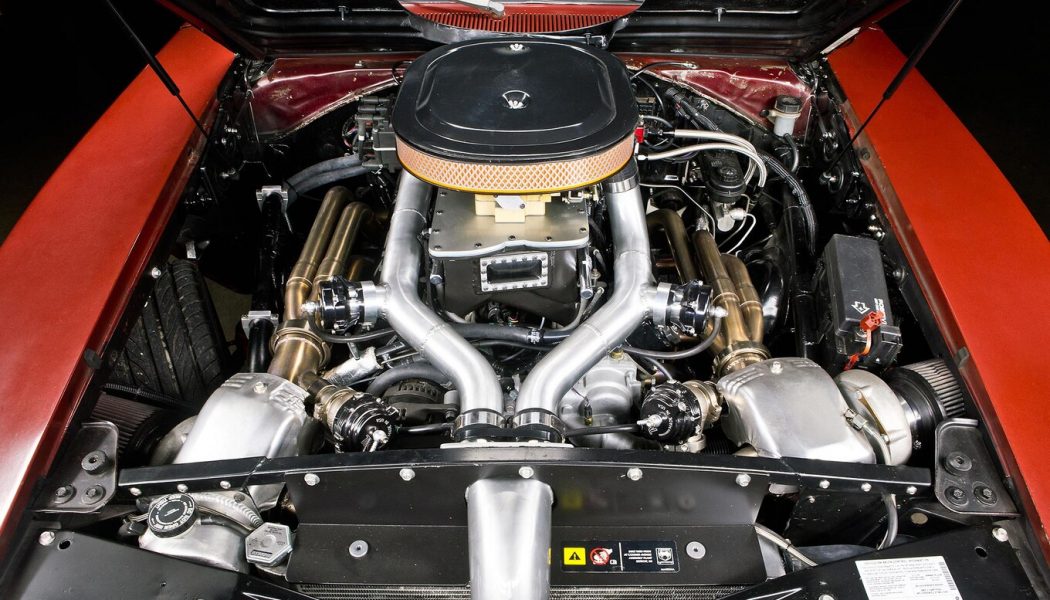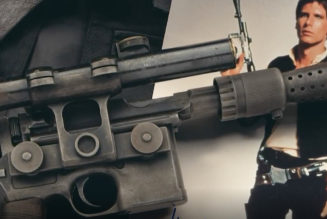The definition of the word lucid in its simplest form describes something that is “straightforward and clear.” It can be used in various ways to describe certain things, but is most often associated with the thought process and the rational or sensible way to view a given situation. Crucial decisions are sometimes made when moments of lucidity take place—even when it comes to automobiles. In 2008, Dave Trevisan had what could be described as a moment of vehicular lucidity. It was a flash of mental clarity that actually took place at the racetrack while he was indulging in some drag racing with his brothers.
At the time, he was in the process of modifying his 1969 Dodge Charger so that he too could join them and engage in some quarter-mile action—and then it hit him while standing in the staging lane. He recalls thinking, “I don’t know if I want to do this. It’s a ton of money I’ll have tied up to only take out a few times during the year. I can make it a street car, and I can meet them at the track, and I’ll put more miles on it one way than they will put on their cars in a lifetime.” While hanging out with family was great, the reality of the situation was that he wanted more seat time in the Charger, for more than a few seconds at a time. Once that stream of thought was planted, further self-convincing also took into consideration the substantial investment in the peripheral stuff needed to just get to and from the track.
While Dave only took ownership of the Dodge in 2006, it had been in the Trevisan family since 1975. His older brother, Mark, was the previous owner and had purchased it when he was only 15 while working at a body shop sweeping floors after school. The opportunity to buy the Charger came about as a result of a customer who didn’t want to invest any money into its repair. It had been towed into the shop with one side heavily damaged, and was deemed a total loss by the insurance company. Filled with youthful ambition, Mark jumped at the chance to buy the car, and with the assistance of some of the guys in the shop—and a 13-year-old Dave—it became his after school project. He hung another fender, door, quarter panel, and eventually laid down a coat of single stage metallic light maroon enamel to make the car whole again. As soon as it was finished it entered active duty as his daily driver while in high school. After graduation he ended up with a full time gig at the shop, and all the resources to wrench on the Charger. With the passage of time, the 383 under the hood was steadily massaged to the point the Charger evolved into a full-blown race car. That lasted until he too had a lucid moment and decided that a 1989 Dodge Daytona converted to rear wheel drive was the lighter way forward. With that fateful decision, the Charger was rolled into a storage shed in 1994.
Dave’s plans for the Charger, right after it was rolled out of the shed were to some degree a continuation of what Mark was planning prior to his decision to park it. Working out of his home garage, and with a very frugal budget, it didn’t take him long to have the car back halved and a roll bar installed. That operation involved cutting down the original 8¾ rear housing and stock axles; 4 inches at each end were removed, and then the shortened assembly hung on a set of ladder bars sprung with QA1 shocks and springs. The braking was also beefed up with the addition of modified Wilwood dual 4-piston calipers and 12-inch rotors. He also stiffened the body with some 2×3 steel rails tying the rear to the front.
In the pipeline was also an upgrade to another mill, with a 440 or Hemi at the top of the wish list. As a result of his trackside epiphany, the desire to do something different prompted him to look at other options. “I wanted something not so common,” he states. “The look and peculiar sound of the V-10 got me thinking, plus I had never owned one.” It didn’t take very long to be sold on the idea that a Viper drivetrain was the ticket, so after some searching he pulled the trigger on a used one out of a low mileage wrecked 2005 Viper from X2 Builders in Pontoon Beach, Illinois. The installation process kicked off in September 2011 and took almost a year from start to finish—or to the point, it was running. Before the V-10 was ever lowered into the engine bay there was one problem going in that he didn’t want to deal with, and that was engine location. After having looked at similar transplants performed on other Chargers, the access to maintenance items like spark plugs and valve cover removal seemed to be an issue that he was looking to avoid. Part of that solution started with the installation of a complete front suspension kit from Riley MotorSports, which included QA1 shocks, 6-piston Wilwood calipers, and 12-inch rotors. In that recipe was also the addition of modified engine mounting points to move the V10 forward. The 6-speed, which included the hydraulic clutch, and the Viper pedal assembly, were also installed. As with the engine installation, ease of access to the gearbox was also a priority, so Dave crafted a removable tunnel cover for it. At the rear, as a result of that 6-speed option, he felt comfortable dropping in a lower gear ratio, so a set of 4.56:1 cogs were fitted into the 8¾ carrier.
The goal was to initially get the engine installed and running, however, the longer-term plan was to increase the power curve, so the low mileage donor V-10 was given a top end refresh, which included some porting of the heads. The last hurdle Dave faced was wiring everything up. “I used the wiring harness that came with the engine and took out what I wasn’t going to use,” he explains. “I just kept what I needed to run the engine, which included the stock engine control module.” After almost a year, he managed to fire the Charger up to the point that everything was working as planned. He ended up only putting about 10 miles on the car until it was again wheeled back into the garage for its next installment.
The next step in the project was the addition of the twin-turbo assembly. As with the installation of the engine, this also became a winter project that he spent a fair amount of time mapping out. He notes, “The planning was the hard part. I must have moved those things around for a month until I decided exactly where I was going to put them.” Once the turbo placement was resolved, the custom headers and all the plumbing were created and mated to the 67mm Precision turbos. That task consumed another winter and when the car was fired up again, running on very low boost, it performed flawlessly. Dave knew that was a step in a positive direction, but he also knew that the stock ECM was a limiting factor. At that point his long time buddy, Barnard Cavanaugh joined in on the build as well. He dove into the tuning side of the equation and started digging into how the engine was using the additional power being created. They used a thermal camera and came to the conclusion that the back of the V10 was running almost 150 degrees cooler and was not getting an even air and fuel mixture as a result of the length of the intake.
That revelation provoked the next phase, which was the installation of a custom ECM unit from EFI Source in Boyertown, PA. Their system wasn’t a plug-and-play deal but it was so well priced, and perfect for this application – the only requirement was that Dave had to create a wiring harness to make it work. The upside to this system was that it gave Barnard greater flexibility in tuning directly from a laptop. On the fuel delivery side, the even fuel mixture disparity was addressed with the purchase of another V10 aluminum intake. Dave removed the top and fabricated a 3-inch tunnel ram box that was fitted with a trio of Dodge Dakota throttle bodies, which were then capped off with an air chamber utilizing an original Six-Pack air cleaner lid. Once that assembly was in place, the resulting tests were successful, however, the stock lid proved to be the weak link as it couldn’t seal properly when the boost was cranked up. He solved that problem with a plate that lies below it, making it an ornamental item. The added height with this set up, which is very deceptive in appearance as it protrudes through the hood, mimics an old school Six-Pack assembly. Adding to the deception is the decal that resembles the oval Fram air filter utilized on those air cleaners. Like the emissions decals under the hood, it is a bit tongue-and-cheek, and as Dave points out, “Some get it, some don’t.”
In the interior, part of what it has evolved into was dictated in many ways by the work Dave did before his change of mind. Most of it is original, however, the rear seat was deleted as a result of the tubs, and the installation of the roll bar. He did add new carpet and a set of budget-minded Scat front seats, and G-Force 5-point harnesses. The stock instruments were also replaced with a set of AutoMeter gauges, a Grant steering wheel installed, and the push-button start switch from the donor Viper mounted on the dash. Capping it all off is a cleverly disguised engine management computer that looks like an 8-track player.
The primary focus from outset was developing what was under the car’s skin. All the years in storage have aged the exterior, giving it a very distinctive patina. As you can probably guess, that is still the metallic light maroon enamel that Mark laid down in the late 1970s, however, as part of the build Dave fully painted and detailed the underside of the car. He clarifies, “I’m not getting any younger. I’m driving the hell out of this thing and not worrying about chipped paint or dirt. I’ve had it on the road since 2013 and I’ve only washed it once. I blow it off with the air hose every spring and it’s good to go.” That low maintenance mindset also carried over to the rolling stock with the addition of a combination of Yokohama S.Drive 215/55R17 tires mounted on 17×7 Rocket Racing Fuel wheels at the front, and Mickey Thompson Sportsman S/R 31x18R15 skins on 15×15 Bogart Racing Wheels at the rear.
While a large part of the work on the car is complete, it’s really never finished. Dave points out, “I’m a tech for a living, so the engine development will never stop.” He and Barnard have been continuously working on the tune, with a particular focus on extracting as much power—and fuel economy—in as low a boost setting as possible. Their theory is that once you dive into the deeper end of the boost table, the knowledge gained at low boost will pay off. Also in the works as an upcoming winter project is the installation of an independent rear. Dave plans on building his own suspension and control arms, while the differential will come from a 6th Gen Camaro 1LE. The goal is to set it up using the laptop to unlock it in 6th gear to drive one rear tire. By using a leaner fuel trim and timing map, the goal is to up fuel mileage. “This may seem odd, but I use whatever materials come my way,” he explains. “This is my working man’s version of a supercar.” It also keeps him busy during the winter months. We suspect not much progress would be made if he lived in a place like Florida.
1969 Dodge Charger V-10 Build Details
Engine
Type: Viper Gen 3 505-cid 8.3L V-10
Bore x stroke: 4.03 (bore) x 3.96 (stroke) inches
Block: 2005 cast-aluminum
Rotating assembly: Stock forged crank, stock connecting rods, stock aluminum pistons
Cylinder heads: Gen 3 aluminum heads ported to match custom intake manifold, factory valves, roller rockers, Comp cams springs, Comp cams, Comp Cams pushrods
Compression: 9.6:1
Induction: Owner-fabricated tri power tunnel ram aluminum manifold, sequential fuel injection, 3 Dodge Dakota throttle bodies, 67mm Prescision turbos, Tial blow off valves, Tial wastegates, K&N air cleaner, custom six pack air chamber
Oiling system: Modified aluminum oil pan, high-volume oil pump
Exhaust: owner built custom headers, 3-inch pipes, Stainless Works mufflers
Ignition: Waste-spark with firewall mounted coils, EFI Source Gold Box
Cooling: Howe aluminum radiator, custom plumbing
Machine work and assembly by: David Trevisan West Chester, PA
Drivetrain
Transmission: 2005 Viper 6-speed manual, factory hydraulic clutch
Shifter: Steeda
Driveshaft: Stock Chrysler
Rearend: Chrysler narrowed 8¾ with back brace, 4.56:1 gears
Chassis
Front suspension: QA1 shocks, Reilly Motorsports front frame and suspension
Rear suspension: QA1 shocks, QA1 springs
Steering: Flaming River rack and pinion
Front brakes: Wilwood 6-piston calipers and 12-inch rotors
Rear brakes: Wilwood dual 4-piston calipers per wheel and 12-inch rotors
Wheels & Tires
Wheels: 17×7 Rocket Racing Fuel (front), Bogart Racing Wheels 15×15 (rear)
Tires: Yokohama S.Drive 215/55R17 (front), Mickey Thompson Sportsman S/R 31x18R15 (rear)
Body
Sheetmetal: Original body panels
Paint: Bronze metallic enamel paint of unknown origin applied in 1978
Interior
Instrumentation: Factory dash, custom gauge cluster, AutoMeter gauges
Upholstery: Scat front seats, G-Force 5-point harness, rear seat delete, stock steering column, Grant GT steering wheel, custom wiring harnesses, owner fabricated roll bar, Viper pedal assembly
Air conditioning: None









![Ralph Lauren Is The Newest Sponsor Of The G2 Esports Team [Video]](https://www.wazupnaija.com/wp-content/uploads/2021/06/ralph-lauren-is-the-newest-sponsor-of-the-g2-esports-team-video-327x219.jpg)
